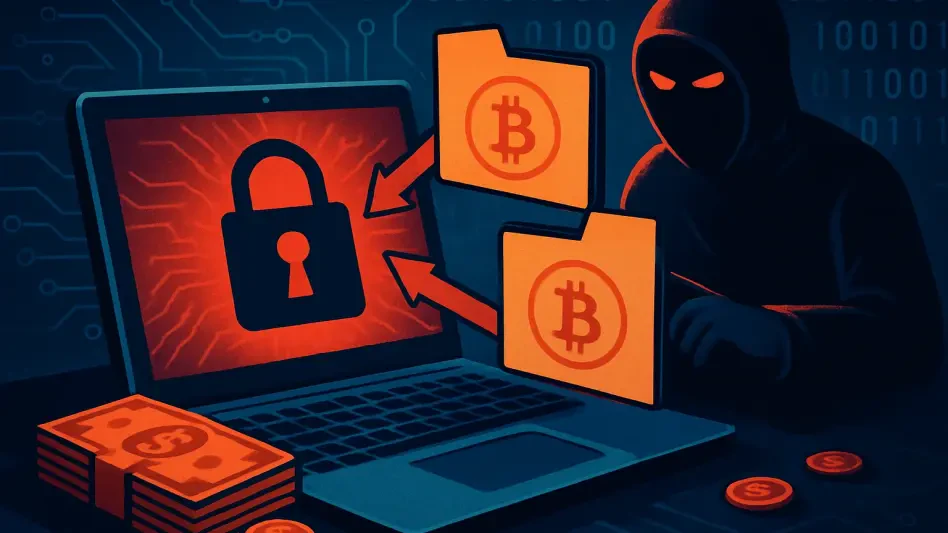What happens when a single click can cost a company millions? In the shadowy realm of cybercrime, a 25-year-old Russian national orchestrated a devastating series of ransomware attacks, shaking the foundations of U.S. businesses with demands totaling $24 million. The story of Aleksei Olegovich Volkov, known in dark web circles as “chubaka.kor,” exposes a chilling reality where young cybercriminals wield unparalleled digital power. This narrative dives deep into the Yanluowang ransomware group’s operations, revealing the human and financial toll of these attacks and the relentless pursuit of justice across borders.
Exposing a Digital Phantom
Behind the pseudonym “chubaka.kor” lies Aleksei Volkov, a young man from Russia who turned vulnerabilities in corporate systems into a lucrative criminal enterprise. Starting in 2025, his activities over a span of roughly two years targeted American companies with ruthless precision. As an initial access broker, Volkov specialized in breaching networks, paving the way for his co-conspirators to deploy ransomware and extort massive sums. His story is not just about one individual but a glimpse into the organized, profit-driven world of cybercrime syndicates.
The significance of this case extends far beyond a single perpetrator. Ransomware has evolved into a critical threat to global economies, disrupting operations and draining resources from businesses of all sizes. Volkov’s actions, which forced some companies to halt operations temporarily, underscore the urgent need to address these digital assaults. This account reveals not only the mechanics of his crimes but also the broader implications for cybersecurity and international law enforcement.
The Rising Threat of Yanluowang Ransomware
Ransomware is no longer a niche concern confined to tech departments; it’s a pervasive crisis impacting entire industries. The Yanluowang group, with Volkov as a key player, exemplifies how these attacks can cripple businesses through data encryption and theft. With U.S. companies facing ransom demands of $24 million, and two victims paying out $1.5 million, the financial stakes are staggering. Such incidents highlight why ransomware is now viewed as a matter of national security.
Beyond the numbers, the human cost is equally alarming. Executives of targeted firms endured harassing phone calls and distributed denial of service (DDoS) attacks, adding psychological pressure to operational chaos. These tactics reveal a calculated cruelty designed to maximize compliance. As cybercrime grows more coordinated, with specialized roles like access brokers fueling the ecosystem, understanding and countering these threats becomes paramount for corporate survival.
Inside Volkov’s Cybercrime Operations
Volkov’s role in the Yanluowang campaign was both technical and pivotal. Between 2025 and the following two years, he exploited system weaknesses to gain entry into the networks of seven U.S. companies, including an engineering firm and a bank. Once inside, he handed over access to accomplices who deployed ransomware, encrypting data and demanding payment. The sheer scale of disruption—temporary shutdowns and millions in losses—paints a stark picture of the damage inflicted.
Specific incidents tied to this group amplify the severity of their methods. A notable case, suspected to involve tech giant Cisco in a 2022 breach, links Yanluowang to other cybercrime entities like UNC2447 and Lapsus$. This connection suggests a network of overlapping actors, sharing tools and strategies to amplify their impact. The combination of data theft, encryption, and aggressive harassment tactics demonstrates a sophisticated approach that goes beyond mere financial gain, aiming to instill fear and chaos.
Tracking a Global Cybercriminal
Uncovering Volkov’s identity and bringing him to justice required cutting-edge investigative techniques and international collaboration. The FBI employed blockchain analysis to trace cryptocurrency transactions, linking payments to Volkov and revealing communications with a co-conspirator in Indianapolis, referred to as “CC-1.” These digital breadcrumbs provided critical evidence of his involvement in attack planning and profit-sharing schemes.
The legal consequences followed swiftly after Volkov’s arrest in Rome in early 2025 and extradition to the United States. On October 29 of the prior year, he pleaded guilty to six charges, including computer fraud, identity theft, and money laundering. Facing up to 53 years in prison and ordered to pay $9.2 million in restitution, his case sends a strong message about accountability. Cybersecurity expert Jane Harper noted, “This prosecution shows that borders can’t shield cybercriminals forever—global cooperation is closing the net.”
The complexity of tracking such offenders was evident throughout the process. Operating from Russia, Volkov leveraged digital anonymity tools, yet persistent efforts by law enforcement pierced through the veil. An official from the U.S. Department of Justice emphasized, “Cases like this prove that no one is untouchable, no matter where they hide.” This international manhunt reflects the evolving challenges and determination required to combat cybercrime on a worldwide stage.
Arming Businesses Against Ransomware Threats
Even with Volkov’s conviction, the ransomware menace persists, demanding proactive defenses from businesses. Strengthening security starts with basics like regular software updates and multi-factor authentication to thwart initial access attempts. Patching vulnerabilities promptly can prevent breaches before they escalate into full-scale attacks, a lesson drawn directly from the Yanluowang playbook.
Education plays a critical role as well. Training employees to spot phishing emails and other social engineering tricks can disrupt the entry points cybercriminals exploit. Additionally, robust incident response plans ensure quick recovery from data breaches, minimizing downtime and financial loss. Companies must simulate attack scenarios to test their resilience, adapting strategies based on real-world threats.
Collaboration is equally vital in this fight. Sharing threat intelligence with law enforcement and cybersecurity firms can help identify patterns and preempt attacks. Reporting incidents promptly aids in tracking perpetrators and building stronger defenses industry-wide. By adopting these measures, businesses can transform from potential victims into fortified entities, ready to withstand the next wave of digital assaults.
Reflecting on a Landmark Case
Looking back, the prosecution of Aleksei Volkov marked a significant victory in the battle against ransomware, exposing the inner workings of the Yanluowang group and the staggering harm inflicted on U.S. businesses. The $24 million in ransom demands and the operational turmoil faced by victims underscored the devastating reach of such crimes. Law enforcement’s use of blockchain analysis to unmask Volkov demonstrated the power of innovative tools in tackling modern threats.
Moving forward, the lessons from this saga point toward actionable solutions. Businesses are urged to prioritize cybersecurity investments, from technical safeguards to employee training, to build resilience against future attacks. Governments and international bodies need to deepen cooperation, ensuring swift extraditions and shared intelligence to deter cybercriminals. The path ahead demands vigilance and unity to safeguard digital landscapes from evolving dangers.








